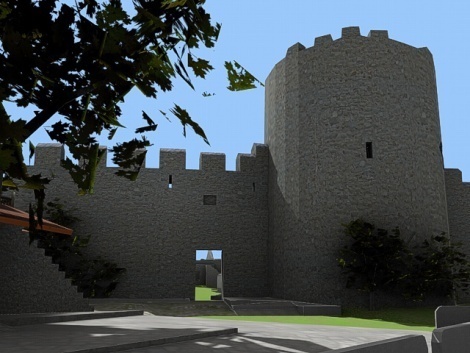Creating 3D Content for Europeana - a Big Challenge
In today's guest blog, Sheena Bassett celebrates the inclusion of new 3D models in Europeana, and explains some of the hard work the CARARE project has undertaken to make this happen.
CARARE supplies a wealth of digital content relating to archaeology and architecture to Europeana. This includes images of monuments and sites, maps, objects such as ceramics and art works.
The big challenge is to supply 3D models which meet the Europeana requirements. 3D models are widely used in cultural heritage to create accurate records of individual monuments and buildings as well as complete sites. They are an increasingly valuable tool for research purposes, for example, to test out theories (it's much easier to move or add something in a 3D model than in real life!) and make comparisons between objects to see if they are related.
And we know that 3D models are also of great interest to the public - just look at 3D gaming. Cultural heritage organisations find that 3D models help people visualise the past and appreciate the historical significance of their curated objects and sites. A fascinating 3D model recreates a complete site with all the buildings, monuments and everyday objects that in real life may be scattered all over the world in various cities and museums.
These lovely models can be created in many ways, using and combining technologies such as laser scanning and photogrammetry and with many different software applications. Their final size can be huge - in the Gigabyte range. So, the (big) challenge is how to transform very large files in multiple formats to a much smaller user-friendly item that doesn't require specialist software of a plug-in to view it?
CARARE chose 3D PDF because it is stable, allows for the transformation of most of the more commonly used 3D formats and also enables text to be combined with the embedded model. It just requires a PDF reader (Acrobat 7 onwards) for viewing. A number of the CARARE partners have been transforming their existing 3D models into 3D PDF and the first of these (from Cultural and Educational Technology Institute (CETI) in Greece) have just appeared in Europeana. More in the pipeline include several models from the Civil Forum of Pompeii, the Hypogeum and temples from Malta, Iberian ceramics and buildings and monuments from Greece.
An example now available in Europeana from CETI is the Castle of Kavala (26 MB), part of the defensive 'wall' of the Byzantine Empire designed to protect the capital, Constantinople (Istanbul).

The Castle of Kavala, Cultural and Educational Technology Institute - Research Centre Athena, CC-BY-NC-ND
The Castle of Kavala or 'Fortress', as the locals call it, is located on the peninsula of Panagia (Virgin Mary) in the area of Macedonia and Thrace. The outer walls surround the peninsula by following the coastline on three sides.
Other examples of 3D PDFS can also be viewed on the CARARE website on the 3D/Virtual Reality page.
Glossary
Photogrammetry - the practice of determining the geometric properties of objects from photographic images
